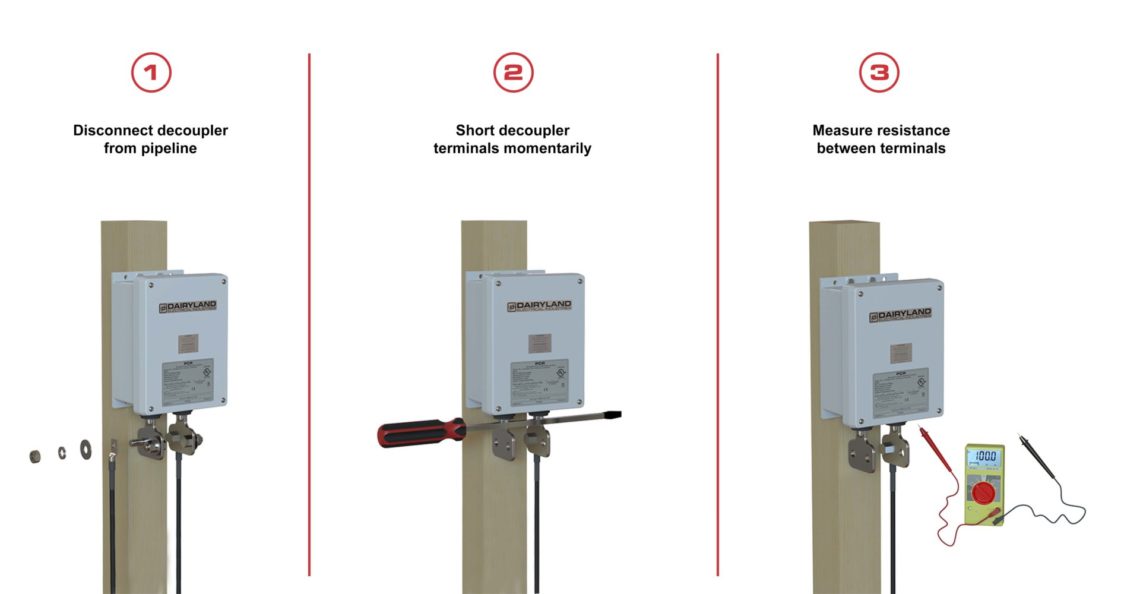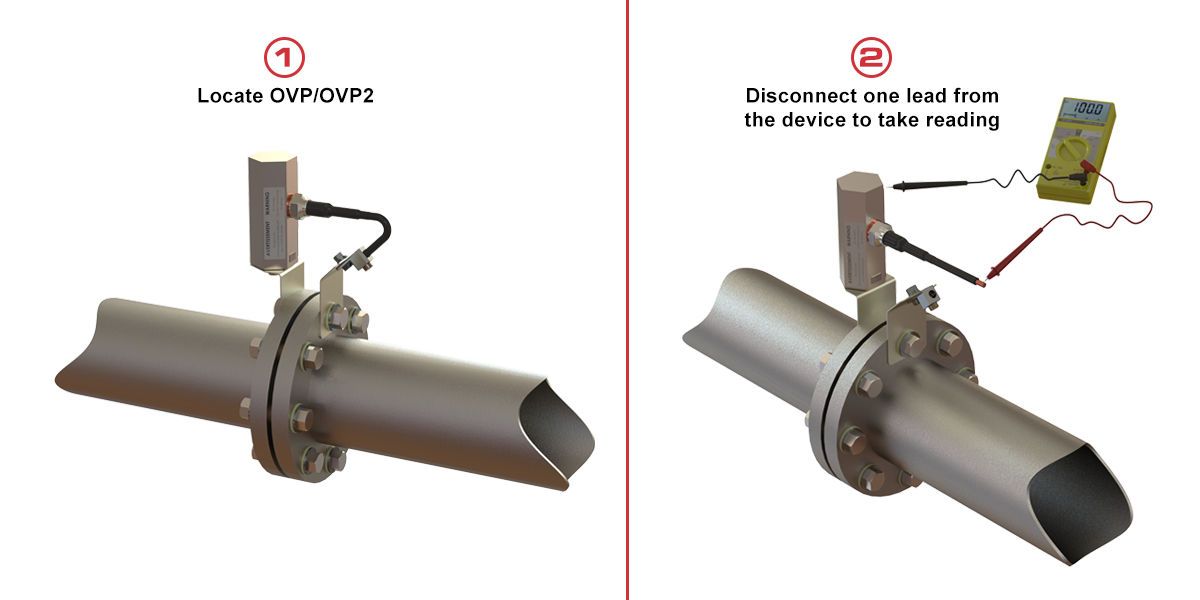Technical Article
Decoupler Testing – Direct Test
Testing instructions for Dairyland products are often requested by customers wanting to verify decoupler operation. For a simple yet effective method of testing all Dairyland products, refer to: Dairyland Product Testing – Indirect Test
For a direct test, follow the instructions below.
Important Safety Considerations
Take appropriate safety measures before disconnecting any Dairyland decoupler and contact Dairyland for further assistance if additional information is necessary to assure that safe practices are used. Refer to the Installation and Operating Instructions for full information.
If the Dairyland device is performing mitigation of induced AC voltage, disconnecting the device will leave the structure as an open circuit, and the induced voltage on the pipeline may rise above the 15V safe level established by NACE/AMPP guidelines.
A shorting jumper cable connected between the two leads before one of them is disconnected from the decoupler will prevent any voltage rise on the structure. At insulated joints, a jumper should be connected across the joint prior to disconnection of a decoupler if AC voltage is present.
When a decoupler is used to provide AC grounding of electrical equipment (e.g., motor operated valve) on a cathodically protected pipeline, a shorting jumper must be connected between the two cables connected to the decoupler so as to keep the equipment grounded when a decoupler lead is removed for testing.
Models PCR, PCRH, PCRX, SSD, ISP
- If the decoupler is in service, first disconnect one lead from the decoupler, so that the decoupler is electrically isolated.
- For pipe to ground installations, it is recommended that you disconnect the pipeline connection.
- For insulated joint applications, either lead may be used.
- Next, momentarily short out the device terminals with a screwdriver or other convenient metallic tool to remove any residual charge that may be on the capacitor within the decoupler. Remove the tool before proceeding to step 3.
- Connect a multi-meter, set to the lowest Ohms scale, across the terminals.
- If the decoupler is functional, the resistance will start at zero ohms and then slowly increase as the capacitor in the decoupler begins to charge from the multi-meter. You may discontinue the test at this point, as fully charging the capacitor may take several minutes, depending on the specific model, and it is necessary to observe this general response only briefly.
- If the product is failed, the reading will remain fixed and at a very low resistance value, typically a fraction of one Ohm.

Models OVP, OVP2
The models OVP and OVP2 block both AC and DC under normal conditions, before switching to the shorted mode. A direct test of the products can be made, and it differs from tests of the decouplers mentioned above.
- If the device is in service, disconnect one lead from the device, so that the device is electrically isolated.
- If the device is functional, the resistance will immediately read a high value, typically hundreds of kilo-Ohms or greater
- If the device is failed, the reading will remain fixed and at a very low resistance value, typically a fraction of one Ohm.

Troubleshooting
Based on the extensive product history and design, it is not expected that Dairyland product failures will be encountered. If the above tests show the product to be functional, yet cathodic protection readings imply that a problem exists, consider the following possibilities:
Open circuit voltage too high:
If the CP voltage (or total DC voltage from all sources) is above the threshold voltage of the Dairyland device, the device will switch into the conduction mode for protection, which would affect CP readings. If this occurs, it is typically near a rectifier ground bed. Solution: select the same Dairyland product family, but with a higher threshold voltage.
OVP or OVP2 used where induced AC present:
The OVP and OVP2 are not designed to be used where induced AC is present. Installation with induced AC present will cause the device to switch to the conducting mode potentially impacting CP voltage. Switch to models SSD, PCR, PCRH, or PCRX to accomplish AC mitigation while blocking DC.
Insulating joint protected by decoupler fails radio frequency insulation test:
A Dairyland decoupler will appear as a short circuit to a radio frequency test device connected across an insulator. To test the insulator alone, remove the Dairyland device first, considering the safety issues discussed in this article. The Dairyland device can then be checked separately as discussed above.
Want To Dive Deeper?
Join One of Our Learning Events.
Our event schedule provides you the in-depth product and application training you need to correctly apply Dairyland products.